When the Twins signed Josh Donaldson to a four-year, $92 million deal, the reaction was predictable, and it was about the bombas. After all, the 2019 Twins just hit the most home runs (307) in Major League history, and now they'd be adding Donaldson, who just mashed 37 of his own. You like homers? The Twins will have homers.
But there's another aspect to this as well, and it's on the other side of the field, because Donaldson rated as an elite defensive third baseman last year. Meanwhile, the 2019 Twins didn't have a particularly impressive infield defense; it was actually one of the weakest in the game. More than that, one of their pitchers in particular was hurt more by poor infield defense than any other. Donaldson's going to help here in more ways than one.
So sure, the homers will be great, and the all-around offensive brilliance Donaldson brings will be huge. (Since his 2013 breakout, he's been one of the 10 best hitters in baseball.) But let's not overlook the fielding part of this story, too. Runs saved are just as important as runs scored.
1) Donaldson was an excellent fielder in 2019
Let's start with this: He was really good on defense. Take a look at Statcast's infield Outs Above Average leaderboard for third basemen in 2019, and you'll find Nolan Arenado (+17) and Matt Chapman (+14) at the top, as you ought to -- any defensive metric that doesn't have those two at the top is probably not telling you the story you're looking for. Third, behind them at +8: Donaldson.
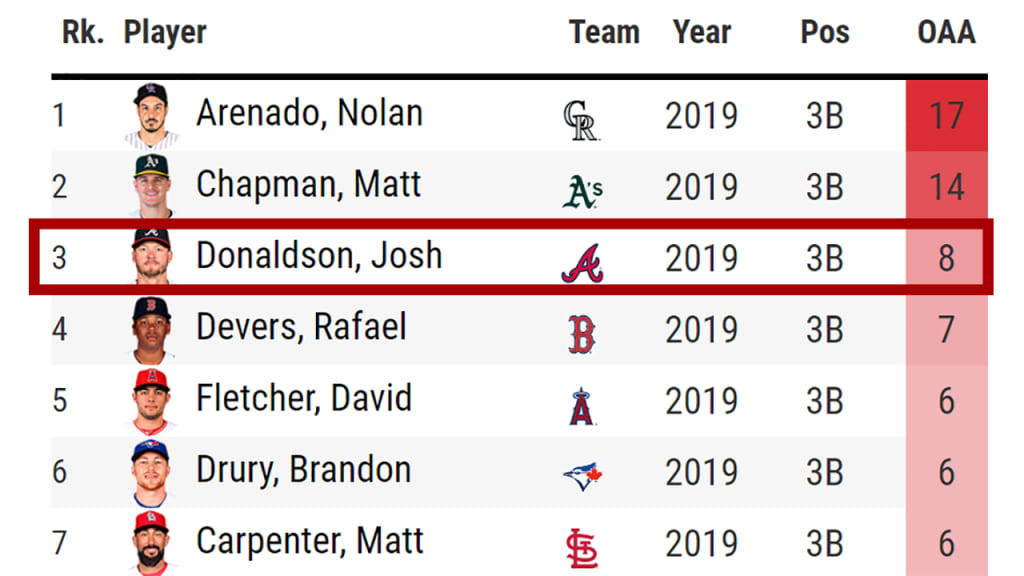
That's an elite mark, obviously. You can see it in plays like this one, where not only did he dive to snare a hard-hit ball, but he also had to contend with the speed of Michael A. Taylor, one of the fastest players in the game. Taking all of that into account, this opportunity was graded as one that is made by infielders just 20% of the time.
This doesn't guarantee he'll be this strong going forward, obviously. He rated only around average in 2017 (-1) and 2018 (+2). But back in the pre-Statcast days, he rated as elite as well (from 2013 to '15, he was third-best in DRS behind Arenado and Manny Machado) and, as you'll see, even if he's "just average," that's a step up, because ...
2. The 2019 Twins didn't have strong infield defense
Look at the team version of the infield Outs Above Average leaderboard, and you'll see that the Twins didn't rate very well, coming in at minus-14, the fifth lowest score of the 30 teams.
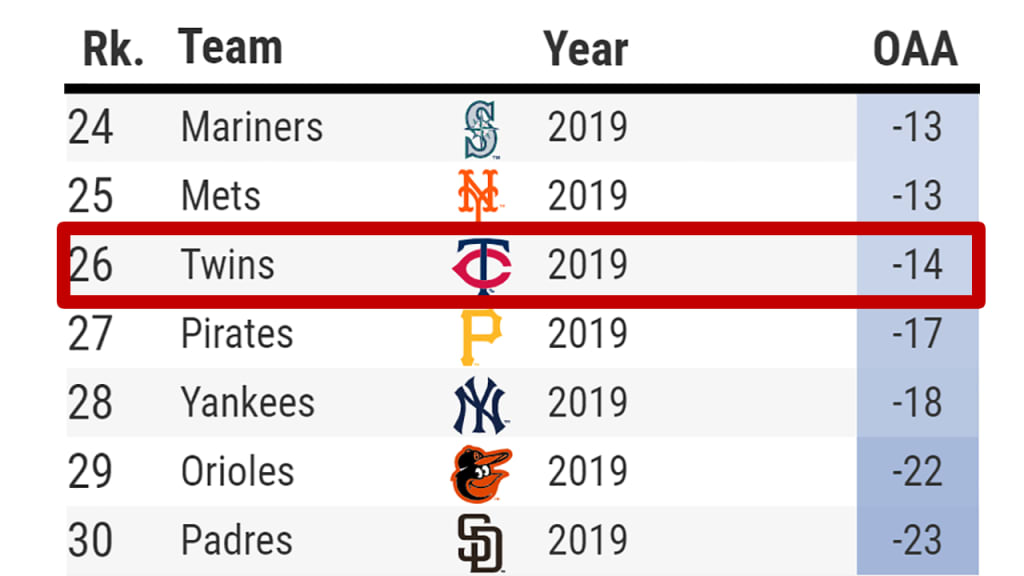
That's backed up by other metrics, too, as the Twins infield came in with minus-19 DRS, and, for much of the winter, you might have considered it even worse than that for 2020. That's because if you look at the 2019 Twins infielders on an individual basis, you'll see that the weakest fielders -- Miguel Sanó, Luis Arráez and Jorge Polanco -- are returning, while two of the better fielders, Jonathan Schoop and C.J. Cron, departed for Detroit.
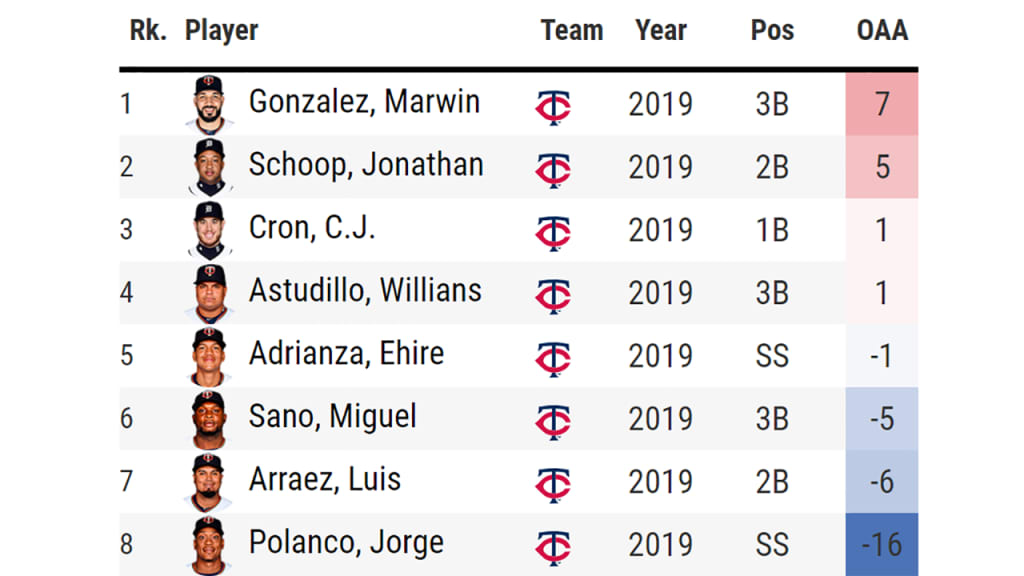
So while this wasn't a strong infield defense last year, there was an argument that it was going to be even weaker in 2020 -- until Donaldson arrived, that is.
You can see that in the field chart here, which shows performance by starting spot, where red (hot) is above-average, and blue (cold) is below-average. We've removed Schoop, Cron and any other ex-Twins, showing what the pre-Donaldson infield would have looked like. It's very blue. (Compare that to an excellent fielding team, like the Cardinals.) Even with Donaldson, it's not great, but that left side sure looks a lot better, doesn't it?
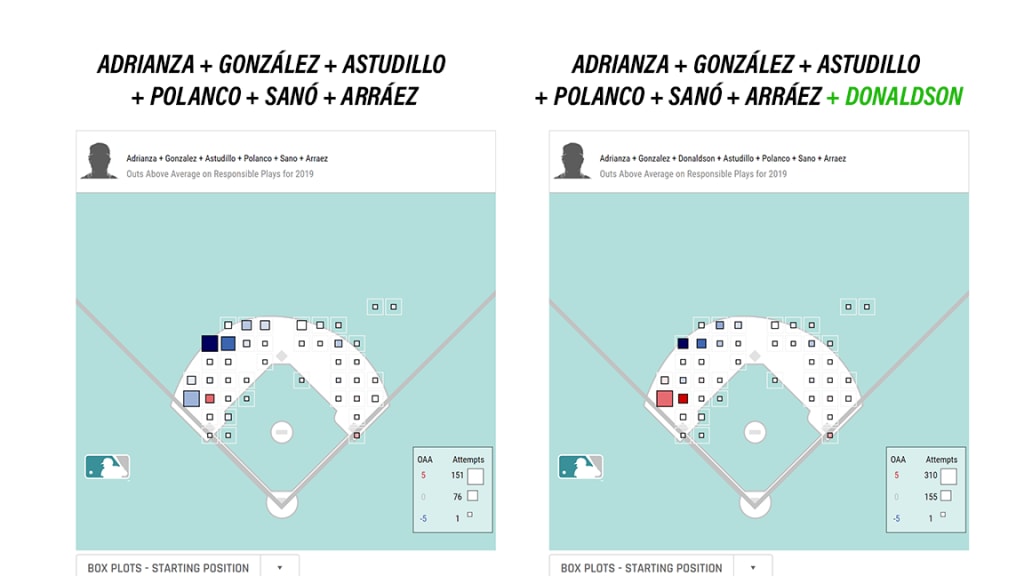
This isn't perfect, obviously, because it's not accounting for Sanó (-3 at third base) shifting over to first, where he ought to be better. You get the idea, though. Donaldson adds a strength to a group that didn't really have one.
That's a big deal for one particular pitcher, because ...
3) No pitcher was harmed by infield defense more than Michael Pineda
We can shift all of this infield defense around to show the effect on pitchers, too. No pitcher was helped more by great infield defense than St. Louis' Dakota Hudson (+16 OAA), which makes sense -- the Cardinals had the best infielders in 2019 and Hudson had the second-highest ground-ball rate of any pitcher with 100 innings.
On the other side?
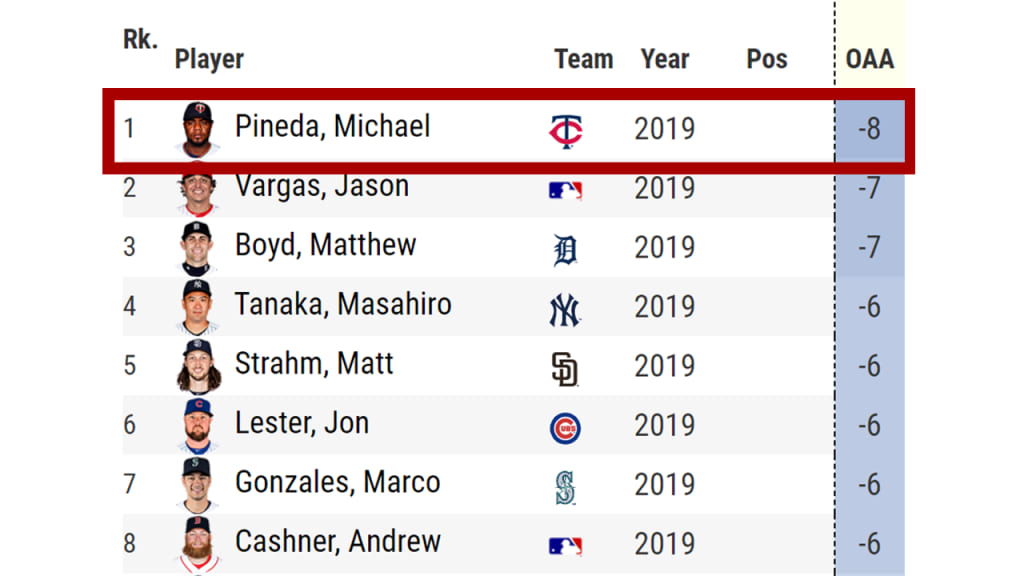
That's a lot, and it might actually be worse than it sounds, because Pineda racked this up in less than a full season, given that he was suspended in September and didn't pitch after Sept. 6. It's not just about errors, either. Here's a single to Sanó on a play that should have been made.
Here's Polanco, rated as baseball's weakest-fielding shortstop, failing to come up with a weakly hit ground ball.
This shows that Pineda was hurt by all of this in 2019, but not necessarily that there's anything specific about him that caused it -- other than pitching in front of poor defenders, and having little to no control over when those defenders made their mistakes. If you really want to be optimistic about it, you might argue that the presence of a better third baseman might help Polanco, who played one of the shallowest shortstops in baseball last year. Then again, his throwing issues have been well documented, and it's possible that recovery from offseason ankle surgery might have a larger impact anyway.
Donaldson is going to bring the offense, obviously. That's what's most visible, and that's what he's primarily being paid for. But he's a plus on defense as well, and he's landing on a team that badly needed an upgrade on the left side of the defensive diamond. It's not just a lineup improvement. It's a baseball improvement.
